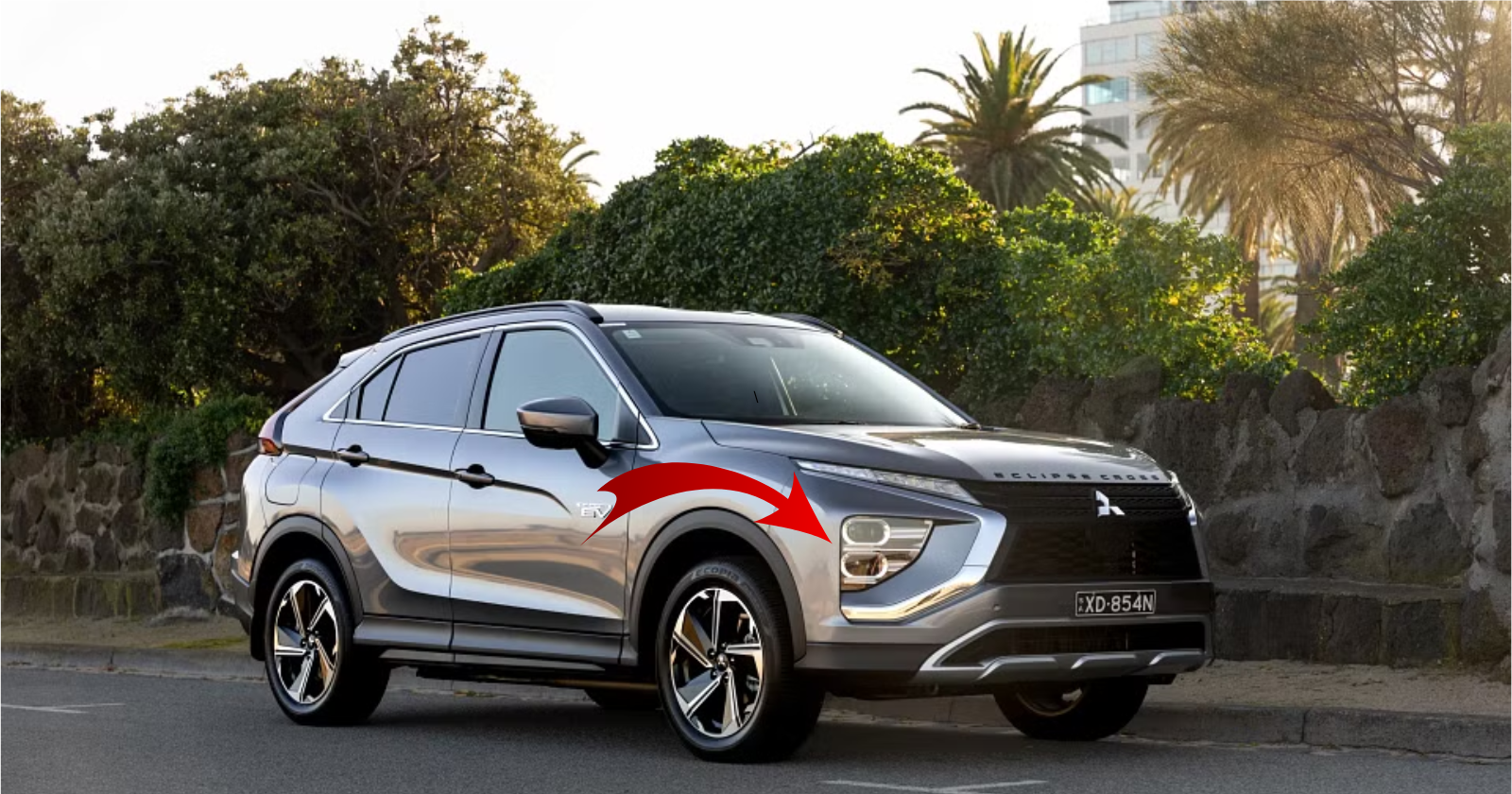The 2025 Mitsubishi Eclipse Cross PHEV Aspire represents a significant step in Mitsubishi’s journey towards electrification. As a plug-in hybrid electric vehicle (PHEV), it aims to bridge the gap between traditional combustion engines and fully electric vehicles, offering the best of both worlds. This review will delve into the various aspects of the Eclipse Cross PHEV Aspire, from its design and performance to its technology and value proposition.
Design and Exterior
The Eclipse Cross PHEV Aspire maintains the distinctive styling that has characterized the Eclipse Cross line since its inception. Key exterior features include:
- Dimensions: 4545mm length, 1805mm width, 1685mm height
- 18-inch alloy wheels
- LED headlights with automatic high-beam
- Roof rails
- Black grille and gloss black front and rear skid plates
The design language remains modern and somewhat polarizing, with its sharp lines and distinctive split rear window. While it may not appeal to everyone, it certainly stands out in the crowded compact SUV segment.
Interior and Comfort
Inside, the Eclipse Cross PHEV Aspire offers a mix of comfort features and practical design:
- Mi-suede and synthetic leather upholstery
- 4-way power driver’s seat with heating
- Dual-zone climate control
- 8-speaker sound system with 4 tweeters
The interior layout is functional, if not cutting-edge. The materials used are of decent quality, but some may find the overall design a bit dated compared to more recently updated competitors.
Infotainment and Technology
The Eclipse Cross PHEV Aspire comes equipped with:
- 8.0-inch touchscreen infotainment system
- Wired Apple CarPlay and Android Auto
- AM/FM/DAB radio and Bluetooth connectivity
- Companion app for remote vehicle control
While the system is user-friendly with large, easy-to-tap tiles and physical shortcut buttons, it lacks built-in navigation and the screen size and resolution are not class-leading.
Performance and Drivetrain
The PHEV system in the Eclipse Cross Aspire is composed of:
- 2.4-liter naturally aspirated four-cylinder petrol engine (94kW @ 4500rpm, 199Nm @ 4500rpm)
- Front electric motor: 60kW / 137Nm
- Rear electric motor: 70kW / 195Nm
- Combined system output: 130kW
- 13.8kWh lithium-ion battery
- All-wheel drive system
The PHEV system provides a smooth and quiet driving experience, especially in urban environments. The transition between electric and petrol power is generally seamless, though the petrol engine can be noticeable when it kicks in under heavy acceleration.
Fuel Economy and Charging
Mitsubishi claims a combined fuel economy of 1.9L/100km for the Eclipse Cross PHEV. However, real-world consumption will vary greatly depending on driving habits and the frequency of charging. The vehicle comes with both Mode 2 and Mode 3 charging cables, allowing for flexibility in charging options.
Practicality and Space
The Eclipse Cross PHEV Aspire offers:
- Boot capacity: 359L with rear seats up, 626L with rear seats folded
- Rear seats that can be reclined for extra comfort
- USB-A and USB-C power outlets for rear passengers
While the boot space is smaller than some competitors due to the hybrid battery placement, it still offers a practical amount of storage for most users. The high load floor and lack of a spare tire (replaced by a repair kit) are points to consider.
Safety Features
Safety equipment in the Eclipse Cross PHEV Aspire includes:
- Forward Collision Mitigation
- Lane Departure Warning
- Automatic High Beam
It’s worth noting that as of January 2024, the Eclipse Cross’s previous five-star ANCAP rating (awarded in 2017) has expired due to ANCAP’s six-year expiry policy.
Price and Value
The Eclipse Cross PHEV Aspire is priced at $51,740 plus on-road costs. This positions it as a premium offering within the compact SUV segment, especially when compared to non-PHEV alternatives. However, the added benefit of plug-in hybrid technology and potential fuel savings may justify the higher initial cost for some buyers.
The 2025 Mitsubishi Eclipse Cross PHEV Aspire presents an interesting proposition in the compact SUV market. Its plug-in hybrid powertrain offers the potential for significant fuel savings and reduced emissions, especially for those with regular access to charging facilities. The vehicle provides a comfortable ride, decent equipment levels, and the practicality expected from an SUV.
However, it does face challenges in terms of its aging interior design, limited boot space, and a higher price point compared to non-PHEV alternatives. The infotainment system, while functional, lags behind some competitors in terms of screen size and features.
For buyers specifically looking for a PHEV option in this segment and who appreciate Mitsubishi’s reputation for reliability, the Eclipse Cross PHEV Aspire could be a compelling choice. However, it’s worth cross-shopping with other hybrid and PHEV options in the market to ensure it meets all your needs and preferences.
